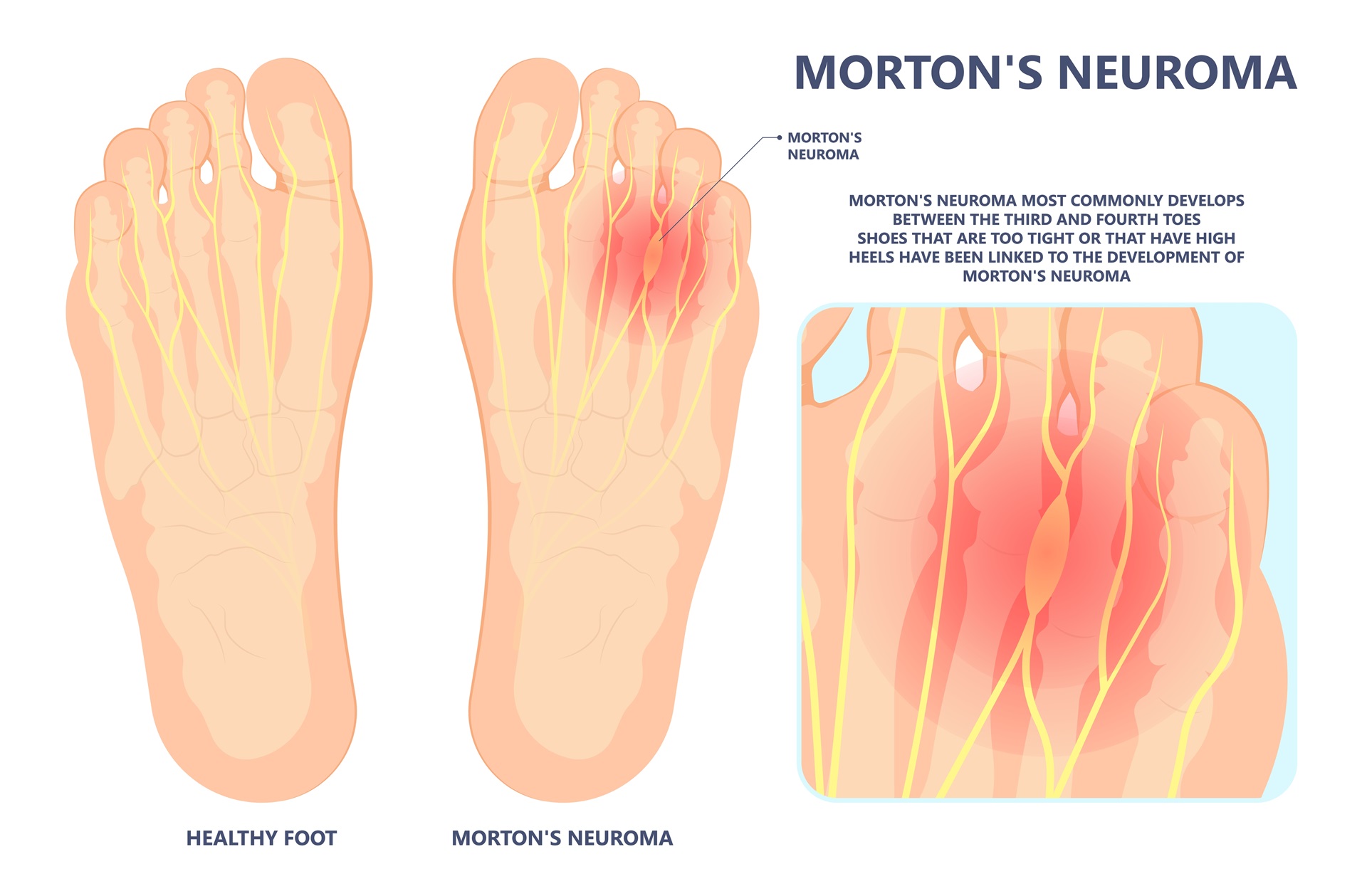Mortons Neuromas

What is Morton’s Neuroma?
Morton’s neuroma is a painful condition that affects the ball of the foot, most commonly between the third and fourth toes. It involves the thickening of the tissue around one of the nerves leading to the toes, resulting in nerve irritation and compression. Morton’s neuroma is often associated with high-heeled shoes or activities that place excessive pressure on the forefoot.
Symptoms of Morton’s Neuroma
Common symptoms associated with Morton’s neuroma include
- Sharp or Burning Pain: This pain is typically felt in the ball of the foot and may radiate into the toes.
- Numbness or Tingling: Numbness, tingling, or a "pins and needles" sensation can occur in the toes.
- Feeling of a Lump: Some individuals report a sensation as if they have a lump or pebble under the ball of their foot.
- Pain that Worsens with Activity: Walking, running, or wearing tight shoes can exacerbate the pain.
Why Does Morton’s Neuroma Occur?
The development of Morton’s neuroma is often linked to factors that increase pressure on the forefoot and irritate the nerve:
- Footwear Choices: Wearing tight, narrow shoes or high heels that compress the toes can aggravate the nerves.
- High-Impact Activities: Activities such as running or jumping can cause repetitive trauma to the nerves in the foot.
- Foot Deformities: Conditions like bunions, hammertoes, or high arches can increase the risk of developing Morton’s neuroma by altering pressure distribution.
- Biomechanical Issues: Abnormal gait or improper foot mechanics can contribute to nerve
Common Management Options for Morton’s Neuroma
The primary aim in managing Morton’s neuroma is to reduce pressure on the nerve and alleviate pain:
- Footwear Modification: Switching to shoes with a wide toe box, low heels, and adequate arch support can help relieve pressure on the affected area.
- Orthotics and Padding: Custom orthotics or metatarsal pads can help offload pressure from the nerve and provide support.
- Activity Modification: Reducing high-impact activities that exacerbate symptoms can aid in
- Physical Therapy: Stretching and strengthening exercises can help improve foot mechanics and reduce nerve irritation.
- Medications and Injections: NSAIDs can help manage pain, while corticosteroid injections may provide temporary relief by reducing inflammation.
- Surgical Intervention: In severe cases, surgical removal of the affected nerve may be
Why See a Podiatrist for Morton’s Neuroma?
A podiatrist can provide an accurate diagnosis of Morton’s neuroma through a comprehensive assessment and imaging if needed. They can recommend appropriate footwear, prescribe custom orthotics, and provide physical therapy exercises to alleviate symptoms. In cases where conservative treatments are ineffective, a podiatrist can perform surgical procedures to remove the neuroma or relieve pressure on the affected nerve.
